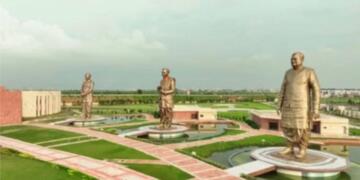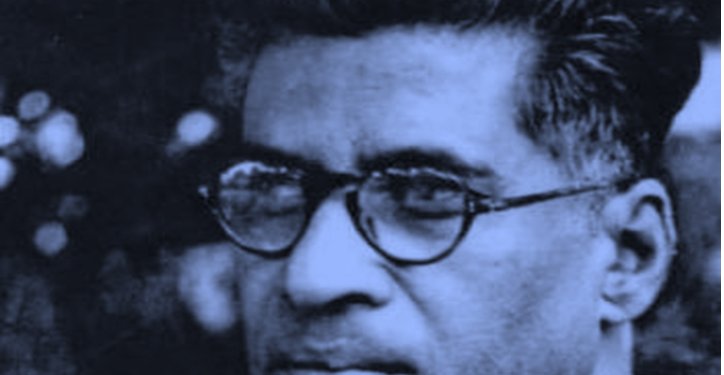For a movement that was almost eradicated four decades ago, Naxalism managing to hold a place in Indian textbooks is nothing short of an achievement, especially considering it was formulated based upon lofty ambition, not much different from the ideology it was inspired by – communism.
Today, the movement is on the fringes, barely kept alive by those still willing to disrupt internal affairs for the sake of installing a communist government at the centre.
But their time might be up too, for the Maharashtra police announced in September that a coalition of various state government police forces would undertake a major sweeping operation through multiple remote areas and forests across Central India.
Yet, the movement once laid claim to relevance throughout the nation, and its history might be worth exploring, before its remnants too are eviscerated.
But Naxalism has always been inextricably linked to communism itself, making it extremely important to understand the origins of the party which was the ideology’s flag-bearer in India.
Of course, communism itself came to limelight after the Bolshevik Revolution managed to overthrow the provisional government of the Russian Republic that came into being after the abdication of Emperor Nicholas II.
This altered the course of World War I, for the Bolsheviks signed an armistice and brought about an end to their official participation. The effective deployment of an ideology to garner supporters and take over a nation, and that too in the midst of the Great War, attracted the interest of millions, while inspiring both fear and adulation at the same time.
Vladimir Lenin had expected this, and hoped to capitalize on the awe his brainchild had inspired throughout the world.
Thus, the Communist International or Comintern was conceptualized by Lenin and other Bolsheviks as a platform for the effective proliferation of communist agenda, and help establish communist parties across the globe to expand their nation’s influence.
With time, the personality cults of communist leaders grew in size, and so did the amount of parties that adhered to their ideology throughout the globe.
The second of the Comintern’s congresses in 1920 happened to be the first where discussions were truly rife. Delegates were invited from all over, and one of them happened to be Indian.
M.N Roy, a Bengali liberal communist hardliner, had travelled the length and breadth of Mexico before forming the Socialist Party of Mexico.
Roy became a busy man after the second Comintern congress, for he converted his socialist party into Mexico’s communist party, regularly wrote columns for comintern’ s magazines, and began to be favored by Lenin, who assigned him the task of spreading communism in Southeast Asia. While in Tashkent, Roy came in contact with Indian communists and established the Communist Party of India (CPI) in late 1920, though only in name.
Roy’s wealth of experience automatically transformed him into a leader among fledgling communists upon his return to India, and he looked to cement the CPI’s existence and make it an actual organization, but not before British paranoia landed him and his contemporaries in prison.
The British were determined to curtail the spread of communism no matter what, and lodged court cases against suspected communists for all reasons possible or plausible, which spawned dozens of lawsuits. Roy himself was captured in Bombay and imprisoned in the Bareilly Central Jail, that too after having received no trial. But by far the most infamous of these lawsuits was the Meerut Conspiracy Case of 1930, which indicted multiple members of the CPI, for they staged a railway strike in association with trade union leaders.
With an aged Roy’s health steadily declining, and most of the young CPI leaders captured, the British thought the job to be done, although their decisions would return to haunt them.
The Meerut conspiracy case stimulated the public’s imagination like none other, and received widespread media coverage throughout the court trials, introducing millions of literate Indians to communism, many of whom were in favor of its policies.
The Meerut prisoners were referred to as Bolsheviks by the British, and although they were Marxists, they’re impact on Indian public opinion was certainly on the level of Lenin and his comrades had on the first world.
With the 30’s coming to an end, each member of the budding CPI was liberated. Brand new public interest and a reduction in British scrutiny meant that the members could finally unite the nation’s communists under one banner.
The CPI began to search far and wide for areas where they could expand their influence and gain their foothold in, and ironically, the region they targeted upon first wasn’t even a part of independent India, for it was the princely state of Hyderabad.
In Hyderabad, traditional methods of collecting money were utilized by landowners, for the Nizam, Asif Jah VII, owned nearly 45% of the state’s land, which was then awarded to landlords known as jagirdars.
They weren’t, though, controlled by the Nizam, for he had long relinquished totalitarian control over the Muslim elite’s holdings in favor of retaining their support.
This meant that the landowners’ treatment of their peasants wouldn’t be regulated, who were completely dependent on their lords for life’s needs and amenities. The dependency ensured that fair treatment wouldn’t be given to farmers unless their employers happened to be altruistic, and wages were, sometimes, non-existent.
These factors weighed in to ensure that the peasants of Hyderabad had it much tougher than even other similarly downtrodden farmers throughout India.
For the CPI, realization dawned that the farmer’s emotional energy could be channelized to create an endemic revolution exclusive to the princely state, although that would be straying from the Communists’ ultimate goal of overthrowing the Indian government.
The communists interacted with the peasants and educated them on their ideology, which led to the rebellion quickly spreading through Hyderabad for it enamored farmers, who were readily provided with weapons and equipment by the CPI to form miniature militias which could war against the landowners and the Nizam’s authorities.
The CPI’s supporters managed to overthrow landowners throughout the Telangana region, and although they were now emancipated, the peasants still pledged their loyalty to the communists and left administrative matters in their hands. Hence, the CPI had an entire stretch of land in Hyderabad under their control, one which would display the real world consequences of their policies and actions.
The CPI did what even Indian state governments couldn’t do at the time, successfully distributing land and resources such as livestock among the farmers, while increasing wages and eradicating norms to attempt and bring about egalitarianism.
The farmers had benefited greatly under the CPI, and banded with them to further revolt and emancipate others in the farming community from their landlords. But, that would require confrontation, and with a greater enemy than they had come across before.
Concentrated funding from the Muslim elite in Hyderabad helped establish the private military comprised of the so-called Razakars, highly equipped (and bigoted) professional soldiers who would engage in conflict against the communists and peasants.
Fighting between the Nizam’s Razakars and the farmers took the shape of a regional turf war within weeks, with the authorities frequently raiding villages and capturing their populations in a bid to contain the communists’ rising influence, crushing potential supporters and allies before their conversion.
The farmers too eliminated all jagirdars and lords in their path, while employing a method to survive against the Razakars that’s the hallmark for modern day Naxalites – guerilla warfare.
The lack of direct conflict and frequent raids meant that the fighting would be kept covert and keep raging. The Razakars’ failure to eradicate the communists resulted in the entire state’s peasants gathering together to launch a greater revolt against the Nizam himself, and the path to defeat him led the CPI supported peasants to the capital of Hyderabad, where the rebellion got truly ugly.
The peasants purged the homes of the elite and enacted their own justice in the form of cold blooded murder, while the Razakars came to oppress Hindus and progressive Muslims, while raping thousands of women too, ensuring that the violence became meaningless.
These transpiring events spurned concern in mainland India, for 1948 also happened to be the year when a treaty of importance came to lapse.

































